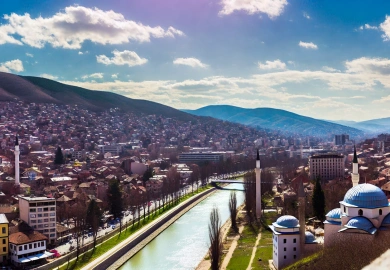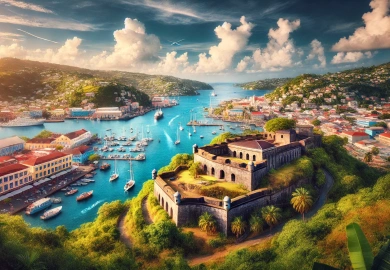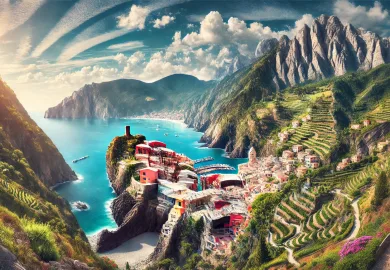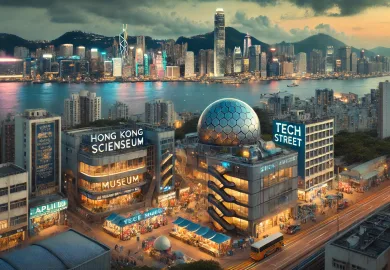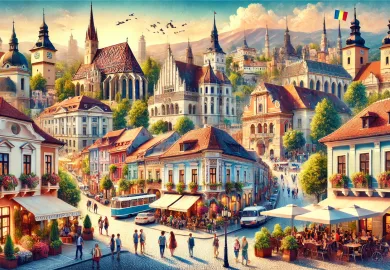
Poland is a land where history and modernity beautifully intertwine, offering travelers a rich tapestry of experiences. From the Gothic architecture of Kraków to the modern vibrancy of Warsaw, this Eastern European gem is brimming with charm and culture. Each city in Poland tells its own unique story, inviting visitors to explore its streets, sample its cuisine, and immerse themselves in its traditions. Whether you’re a history buff, a foodie, or simply someone who enjoys strolling through picturesque streets, Poland’s cities have something special for everyone.
Kraków: The Heart of Poland’s Cultural Heritage
Kraków, Poland’s former capital, is a city where history comes alive at every corner. Known for its well-preserved medieval core and vibrant cultural scene, Kraków is a must-visit for any traveler exploring Poland. The city’s centerpiece, the Rynek Główny (Main Market Square), is one of the largest medieval squares in Europe and a hub of activity both day and night.
Visitors can start their journey at St. Mary’s Basilica, a stunning Gothic church with a richly decorated interior. Every hour, the Hejnał, a traditional bugle call, is played from the church’s tower, a tradition that dates back to the Middle Ages. From the square, it’s easy to explore the rest of the Old Town, with its narrow cobblestone streets, historic buildings, and numerous cafes and restaurants serving traditional Polish dishes like pierogi and żurek.
Kraków is also home to the Wawel Castle, a UNESCO World Heritage site that once served as the residence of Polish kings. The castle complex includes a cathedral, royal chambers, and a treasure trove of art and artifacts. The nearby Kazimierz district, once the center of Jewish life in Kraków, is now a vibrant neighborhood known for its bohemian atmosphere, trendy bars, and rich history.
Warsaw: The Phoenix City Reborn from Ashes
Warsaw, Poland’s capital, is a city that has seen it all—devastation, reconstruction, and a resurgence as a vibrant European metropolis. Unlike Kraków, much of Warsaw was destroyed during World War II, but the city’s spirit remained unbroken. Today, Warsaw is a testament to resilience and innovation, with a skyline that mixes restored historic buildings with modern skyscrapers.
A visit to Warsaw should start with the Old Town, a meticulously reconstructed area that was almost entirely destroyed during the war. The Royal Castle, once the residence of Polish monarchs, stands proudly at the entrance to the Old Town, offering visitors a glimpse into Poland’s royal past. The Market Square, with its colorful townhouses and the iconic Mermaid Statue, is the perfect place to relax with a cup of coffee while soaking in the atmosphere.
For a deeper understanding of Warsaw’s history, the Warsaw Uprising Museum is a must-see. It chronicles the 1944 uprising against Nazi occupation, an event that played a crucial role in shaping the city’s identity. After exploring the museum, visitors can take a stroll along the Royal Route, a historic thoroughfare that connects the Royal Castle with Wilanów Palace, another architectural gem.
Modern Warsaw is also worth exploring, with its array of shopping centers, trendy restaurants, and cultural venues. The Palace of Culture and Science, a towering relic of the Soviet era, offers panoramic views of the city from its observation deck, while the Vistula River banks are perfect for a leisurely walk or a bike ride.
Wrocław: The Venice of Poland
Wrocław, often referred to as the “Venice of Poland,” is a city that charms visitors with its network of canals, numerous bridges, and a rich mix of architectural styles. Situated on the Odra River, Wrocław is one of Poland’s oldest cities, with a history that spans more than a thousand years. Today, it is known for its vibrant cultural scene, stunning architecture, and a lively atmosphere that makes it a favorite among tourists.
The heart of Wrocław is its Market Square (Rynek), one of the most beautiful and largest squares in Europe. The square is surrounded by colorful townhouses and dominated by the Gothic-style Town Hall, which is a masterpiece of medieval architecture. The square is also home to numerous restaurants and cafes, making it an ideal spot to relax and enjoy some local cuisine while people-watching.
Wrocław is also famous for its hundreds of dwarf statues scattered throughout the city. These small bronze figures, known as “krasnale,” have become a symbol of the city’s unique character. Visitors can embark on a “dwarf hunt” to find as many of these whimsical statues as possible, each one telling its own little story.
A visit to Wrocław would not be complete without exploring Ostrów Tumski, the oldest part of the city. This former island on the Odra River is home to Wrocław Cathedral and other historic buildings, offering a glimpse into the city’s medieval past. In the evening, Ostrów Tumski is particularly enchanting as gas lamps are lit by hand, creating a magical atmosphere that transports visitors back in time.
Gdańsk: The Maritime Gateway to Poland
Gdańsk, located on the Baltic Sea coast, is a city with a rich maritime heritage and a pivotal role in Poland’s history. It was here that the Solidarity movement, which played a significant role in the fall of communism in Eastern Europe, was born. Gdańsk’s history as a major port city has left it with a wealth of architectural treasures and a vibrant cultural scene.
The Long Market (Długi Targ) is the heart of Gdańsk’s Old Town, lined with colorful merchant houses and dominated by the imposing Neptune Fountain. The street leads to the iconic Green Gate, a historic city gate that now houses an art gallery. Visitors can also explore the nearby St. Mary’s Church, one of the largest brick churches in the world, offering stunning views of the city from its tower.
Gdańsk is also home to the European Solidarity Centre, a museum and cultural center dedicated to the history of the Solidarity movement and its impact on the fall of communism. The center is located near the Gdańsk Shipyard, where the movement began, and offers a powerful insight into Poland’s recent history.
For a more relaxing experience, visitors can head to the nearby seaside resort of Sopot, known for its long wooden pier and sandy beaches. Together with Gdynia, another neighboring city, Gdańsk forms the Tri-City metropolitan area, offering a diverse range of attractions and activities for visitors to enjoy.
Poznań: The Birthplace of the Polish Nation
Poznań, one of the oldest cities in Poland, is often considered the birthplace of the Polish nation. It was here, in the 10th century, that Poland’s first ruler, Mieszko I, established his seat of power, laying the foundations for the Polish state. Today, Poznań is a vibrant city known for its historical landmarks, lively cultural scene, and a strong sense of identity.
The Old Market Square (Stary Rynek) is the heart of Poznań and one of the most beautiful squares in Poland. The square is dominated by the Renaissance-style Town Hall, where every day at noon, two mechanical goats emerge from the tower to butt heads, a charming tradition that dates back centuries. The square is also surrounded by colorful townhouses, cafes, and restaurants, making it a popular spot for both locals and tourists.
Poznań is also home to the Cathedral of St. Peter and St. Paul, located on Ostrów Tumski, the oldest part of the city. The cathedral is the final resting place of several early Polish rulers and is a significant site for understanding Poland’s early history. Nearby, the Poznań Croissant Museum offers a fun and interactive way to learn about the city’s culinary traditions, particularly its famous St. Martin’s croissants.
For a more contemporary experience, the Stary Browar shopping and arts center is a must-visit. Housed in a former brewery, this award-winning complex blends art, commerce, and entertainment, offering a unique shopping experience in a stunning architectural setting. Poznań’s blend of history and modernity makes it a city that appeals to a wide range of interests, from history enthusiasts to culture seekers.
Conclusion: Poland’s Cities Await Your Discovery
Poland’s cities offer a rich and diverse travel experience, with each city showcasing its own unique character and charm. From the medieval streets of Kraków to the modern vibrancy of Warsaw, the canals of Wrocław, the maritime heritage of Gdańsk, and the historical significance of Poznań, Poland is a country that invites exploration and discovery.
Whether you’re interested in history, culture, architecture, or simply enjoying the local cuisine, Poland’s cities have something for everyone. As you wander through the streets of these enchanting cities, you’ll find yourself immersed in the stories of the past, the energy of the present, and the promise of the future. So pack your bags, set your itinerary, and get ready to embark on a journey through the best cities in Poland—each one a destination in its own right, waiting to be explored.

